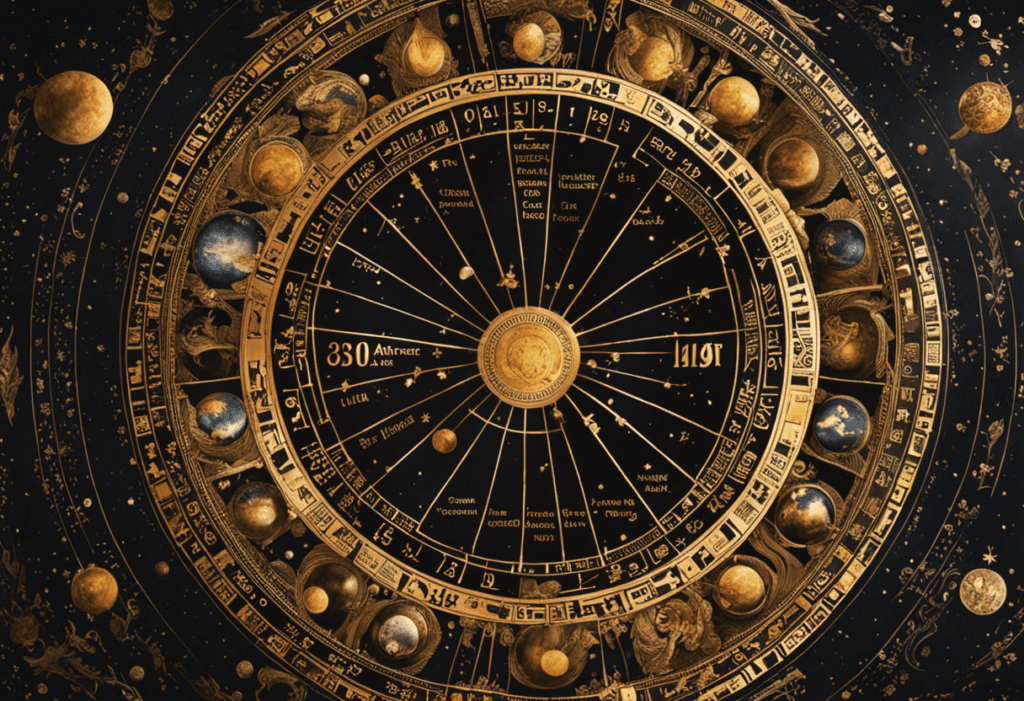In the ancient Greek calendar, the observation of celestial events played a crucial role in timekeeping. Among these events, the heliacal risings of certain stars and constellations held particular significance.
This article explores five key heliacal risings and their role in the ancient Greek calendar.
From the appearance of Sirius, the Star of the Dog Days, to the return of Persephone heralding the arrival of spring, we delve into the detailed and precise observations that allowed the Greeks to track time with great accuracy.
Key Takeaways
- Heliacal risings, such as the rising of Sirius and the Pleiades, were important markers for the changing of seasons in the ancient Greek calendar.
- Celestial navigation played a crucial role in ancient Greek navigation, with stars like Sirius, Venus, and Orion serving as navigational aids.
- Mythological significance and symbolism were intertwined with celestial events, with stars like Sirius and Venus being associated with celestial navigation and certain gods and goddesses.
- The return of Persephone from the underworld marked the transition from winter to spring and symbolized renewal and growth, leading to the revival of nature and the earth’s fertility.
Sirius: The Star of the Dog Days


Traditionally, Sirius, the brightest star in the night sky, rises heliacally once a year, marking the beginning of the dog days. In ancient myths and cultures, Sirius held great significance and was often associated with celestial navigation. In ancient Greece, Sirius was known as the Dog Star and was believed to be the companion of Orion, the great hunter. According to Greek mythology, Orion was killed by a scorpion, and both he and his faithful dog were placed in the heavens as a constellation.
The heliacal rising of Sirius was an important event in the ancient Greek calendar. It was observed as a marker for the changing of seasons and was used for agricultural purposes. The appearance of Sirius in the pre-dawn sky signaled the arrival of hot and dry days, which were known as the ‘dog days’ due to the association with Sirius. This period was believed to bring about drought and the scorching heat of summer.
Furthermore, Sirius played a crucial role in celestial navigation. Ancient mariners used the heliacal rising of Sirius as a guide for navigation, as it helped them to determine their position at sea. By observing the rising and setting of Sirius, sailors were able to navigate across vast distances, using the star as a reference point. This celestial navigation technique was particularly important for ancient seafaring civilizations, such as the Greeks, who relied on the stars to navigate their ships.
Venus: The Evening Star and Morning Star


Both an evening star and a morning star, Venus holds a prominent position in the ancient Greek calendar and is a celestial object of great importance. Known as the goddess of love and beauty, Venus was closely associated with the concepts of romantic love and desire in Greek mythology. As such, Venus was often regarded as a symbol of love and beauty in ancient Greek culture, and her presence in the sky was seen as a favorable omen for matters of the heart.
In addition to its symbolic significance, Venus also served as a celestial guide for sailors in ancient Greece. Due to its brightness and visibility, Venus was used by sailors as a navigational aid during their voyages. By observing the position of Venus in the evening or morning sky, sailors could determine their direction and ensure a safe passage. This made Venus a vital celestial marker for maritime travel in the ancient Greek world.
The dual nature of Venus as both an evening star and a morning star added to its mystique and allure. As an evening star, Venus would appear after sunset, casting a radiant glow in the twilight sky. Conversely, as a morning star, Venus would herald the dawn, bringing light and hope to the start of a new day. This duality further emphasized Venus’s association with love, beauty, and the cyclical nature of time.
Pleiades: The Seven Sisters


Why are the Pleiades, also known as the Seven Sisters, significant in the ancient Greek calendar?
In Greek mythology, the Pleiades were seven sisters who were the daughters of the titan Atlas and the nymph Pleione. They were named Maia, Electra, Alcyone, Taygete, Asterope, Celaeno, and Merope. According to myth, the sisters were pursued by Orion, the mighty hunter. To protect them, Zeus transformed the sisters into stars and placed them in the night sky.
The Pleiades played an important role in celestial navigation for the ancient Greeks. They were used as a marker for the changing seasons, particularly the arrival of spring and autumn. The heliacal rising of the Pleiades, which is when they first become visible above the eastern horizon before sunrise, was an important event in the Greek calendar. It marked the beginning of the sailing season and the planting season for crops.
The position of the Pleiades in the sky also helped ancient Greek astronomers determine the length of the year. By observing the heliacal rising and setting of the Pleiades, they were able to create a more accurate calendar. This knowledge was crucial for agriculture, as it allowed farmers to plan their planting and harvesting activities accordingly.
Orion: The Hunter in the Night Sky


In the ancient Greek calendar, Orion was not only a prominent constellation but also a symbol of celestial power and prowess. This magnificent constellation, located on the celestial equator, has captivated the imaginations of people for centuries with its mythological origins and significance in celestial navigation.
According to Greek mythology, Orion was a hunter of great strength and skill. He was said to have been the son of Poseidon, the god of the sea, and Euryale, a mortal woman. Orion’s incredible hunting abilities earned him a place among the stars after his death, where he continues to be admired by stargazers.
Orion’s distinctive shape, resembling a mighty hunter with a raised arm holding a club, is easily recognizable in the night sky. This constellation played a crucial role in celestial navigation for ancient Greek astronomers. Its position in the sky served as a reference point for determining the time of year and the changing seasons. The rising and setting of Orion, along with other key celestial events, helped to mark important dates in the ancient Greek calendar.
Today, Orion remains a beloved constellation, admired for its beauty and significance in both mythology and astronomy. Its mythological origins and role in celestial navigation highlight the enduring fascination that humans have with the wonders of the night sky.
Persephone: The Return of Spring


As the seasons transitioned from winter to spring in the ancient Greek calendar, the return of Persephone played a pivotal role in marking this period of renewal and growth. Persephone, the daughter of Zeus and Demeter, was abducted by Hades, the god of the underworld, and forced to become his queen. During her time in the underworld, Demeter, the goddess of agriculture and fertility, mourned the loss of her beloved daughter, causing the earth to wither and die. However, a compromise was eventually reached, allowing Persephone to spend six months of the year with her mother and the other six months with Hades.
The return of Persephone from the underworld signified the end of winter and the beginning of spring. It was believed that her reunion with Demeter brought about the rebirth of nature and the revival of the earth’s fertility. This symbolism of spring was essential in the ancient Greek calendar as it marked the start of the agricultural season and the time for planting crops.
The return of Persephone was celebrated with various rituals and festivals, such as the Eleusinian Mysteries, which honored Demeter and Persephone and emphasized the cycle of life, death, and rebirth. These ceremonies served as a reminder of the interconnectedness between the natural world and human existence.
Conclusion
In the ancient Greek calendar, the observation of heliacal risings played a significant role in timekeeping. These celestial events, such as the rising of Sirius, Venus, Pleiades, Orion, and Persephone, were imbued with symbolic meaning.
They marked the changing of seasons, the return of spring, and the rise and fall of various stars. By understanding and interpreting these celestial occurrences, the ancient Greeks were able to navigate and organize their lives in harmony with the rhythms of the cosmos.




